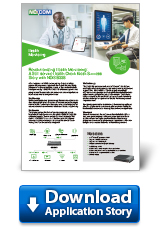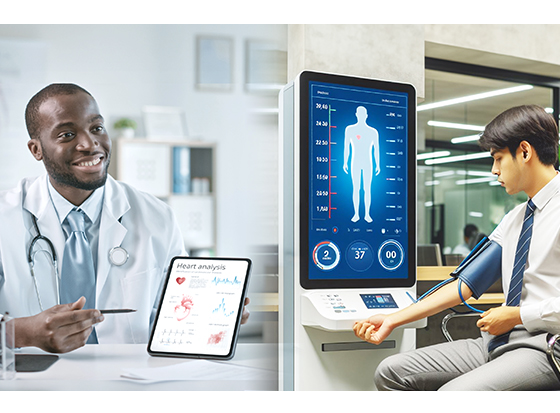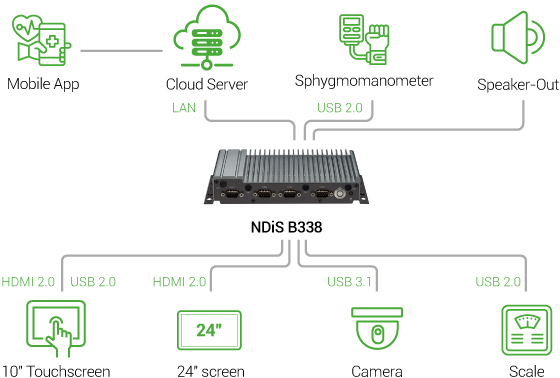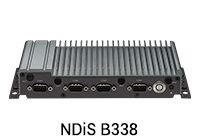Revolutionizing Health Monitoring: A Self-service Health Check Kiosk Success Story with NDiS B338

In bustling cities of APAC, a revolutionary change is taking place in the way citizens approach their health and well-being. A beacon of wellness emerged, a state-of-the-art health check kiosk powered by NEXCOM’s NDiS B338 embedded system, was designed to offer accessible and convenient, and comprehensive health assessments to anyone in need

The Challenge
With a growing population spread across the cities and remote areas, there was a pressing need for a more efficient and accessible way to monitor health. Traditional methods were time-consuming and often required visits to medical facilities, which could be daunting for many.
The Solution
The answer came in the form of a cutting-edge self-service health check kiosk, built around the robust NEXCOM NDiS B338 embedded system. Tailored to meet the intricate needs of the market, NDiS B338 features 3 HDMI 2.0 outputs, 6 USB ports, 4 serial ports, and audio output, ensuring a versatile and user-friendly interface for seamless integration.
The Technology
The NDiS B338 stands out with its Intel ® Celeron® J6412 Quad core high-performance processor and wide operating-temperature support from -20°C to 60°C. HDMI 2.0 outputs deliver high-definition visuals, guiding users through the health check process with interactive prompts and educational content. The multiple USB ports allow for the attachment of various health monitoring devices, enabling a full spectrum of checks, from blood pressure to glucose levels.
Serial ports provide seamless connectivity for additional peripherals, while the speaker-out ensures clear audio instructions, making the kiosk accessible to all users, including those with visual impairments.
Application Diagram

Figure 1: System Architecture
The Impact
Since its introduction, this self-service health check kiosk has seen widespread adoption, with users praising its ease of use and the immediate insights into their health. It has not only empowered individuals to take proactive steps towards their well-being but also reduced the burden on healthcare providers.
- Related Links:
- Gear up Smart Parking Efficiency and Connectivity with NDiS B561-PoE
- NDiS B560: Empowering Packaging Industry in the Digital Age
- Browse Other News:
- AI Emerges as a Game-Changer in Disaster Management: From Reactive to Proactive
- Revolutionizing Health Monitoring: A Self-service Health Check Kiosk Success Story with NDiS B338
- All Case Study News


